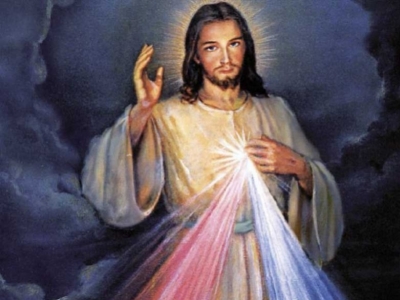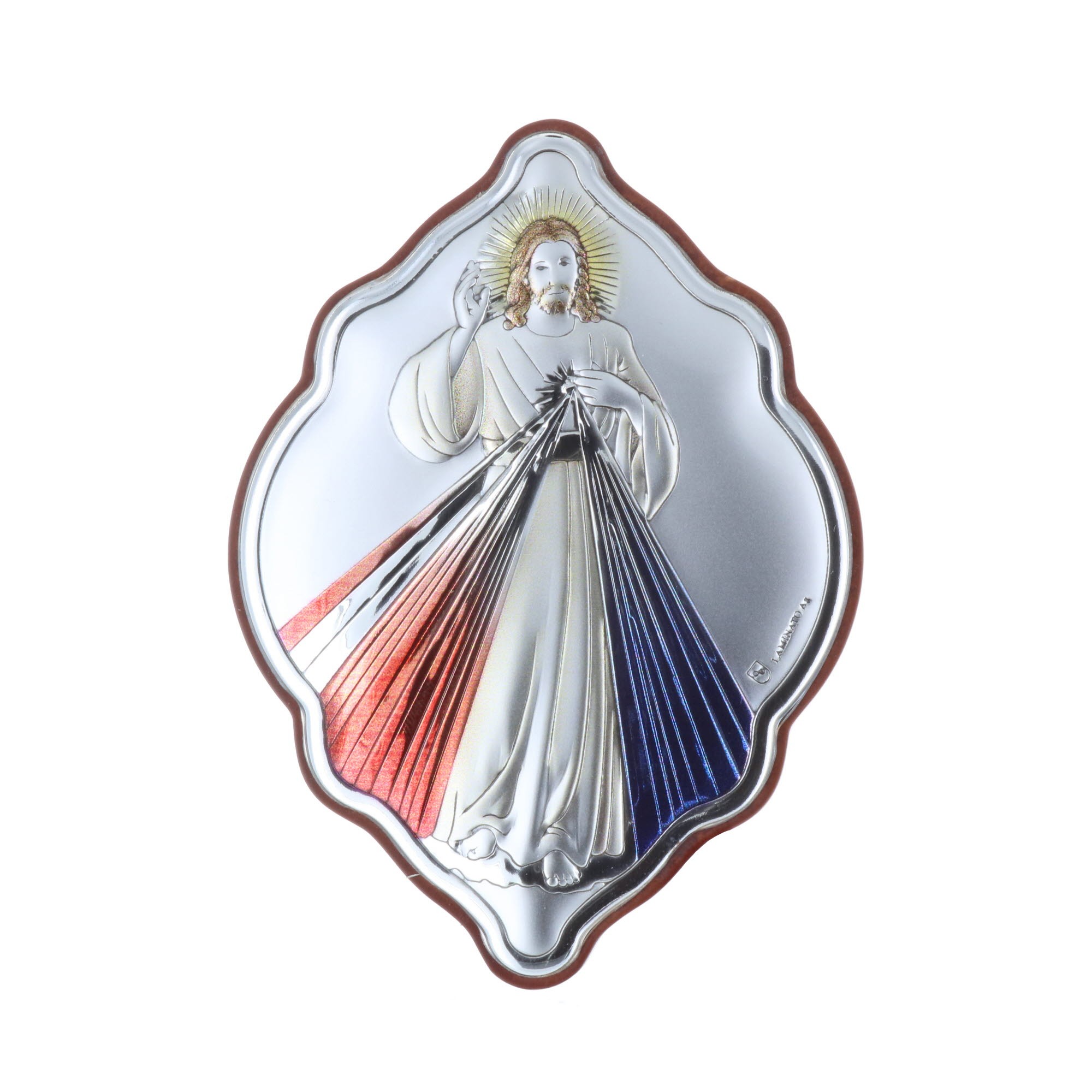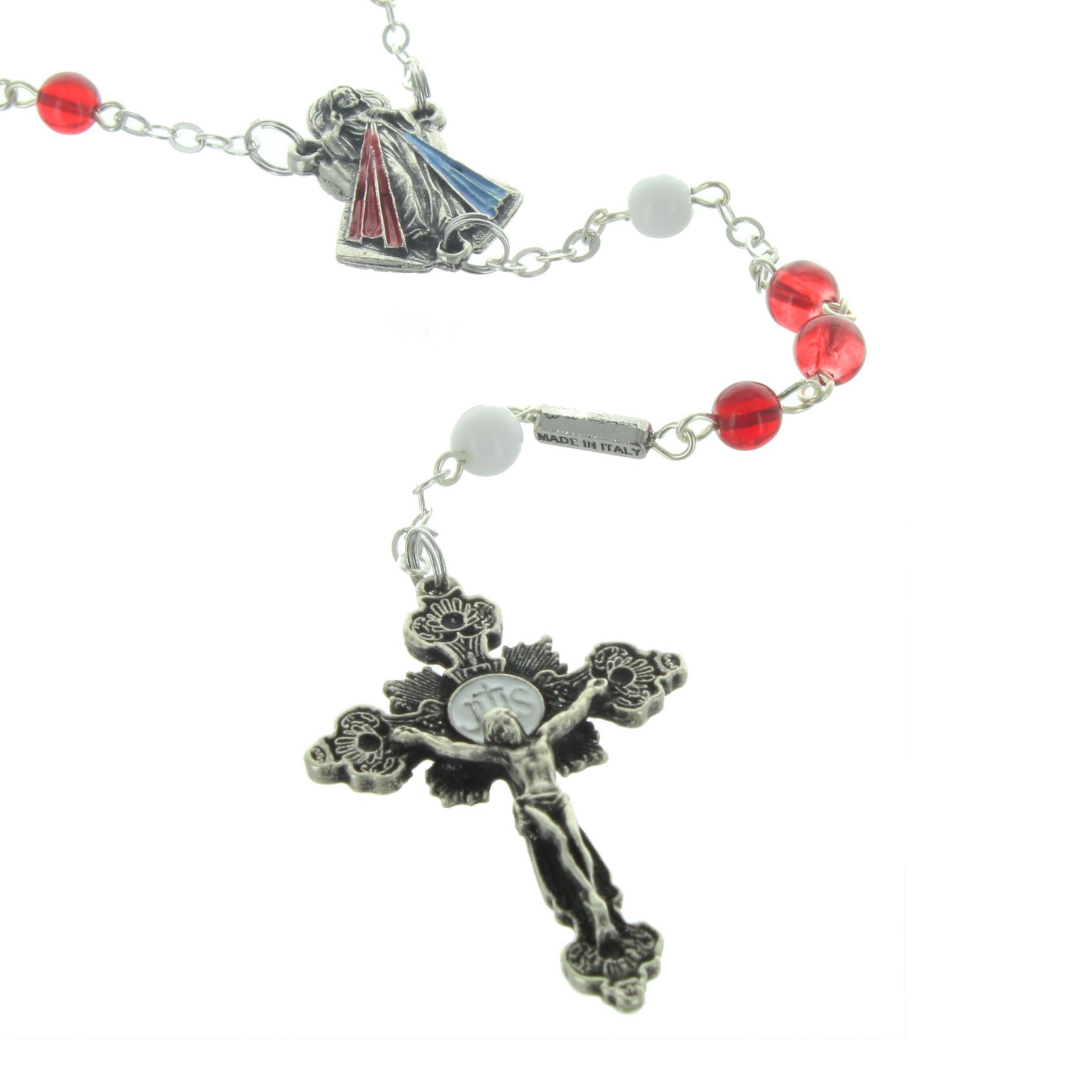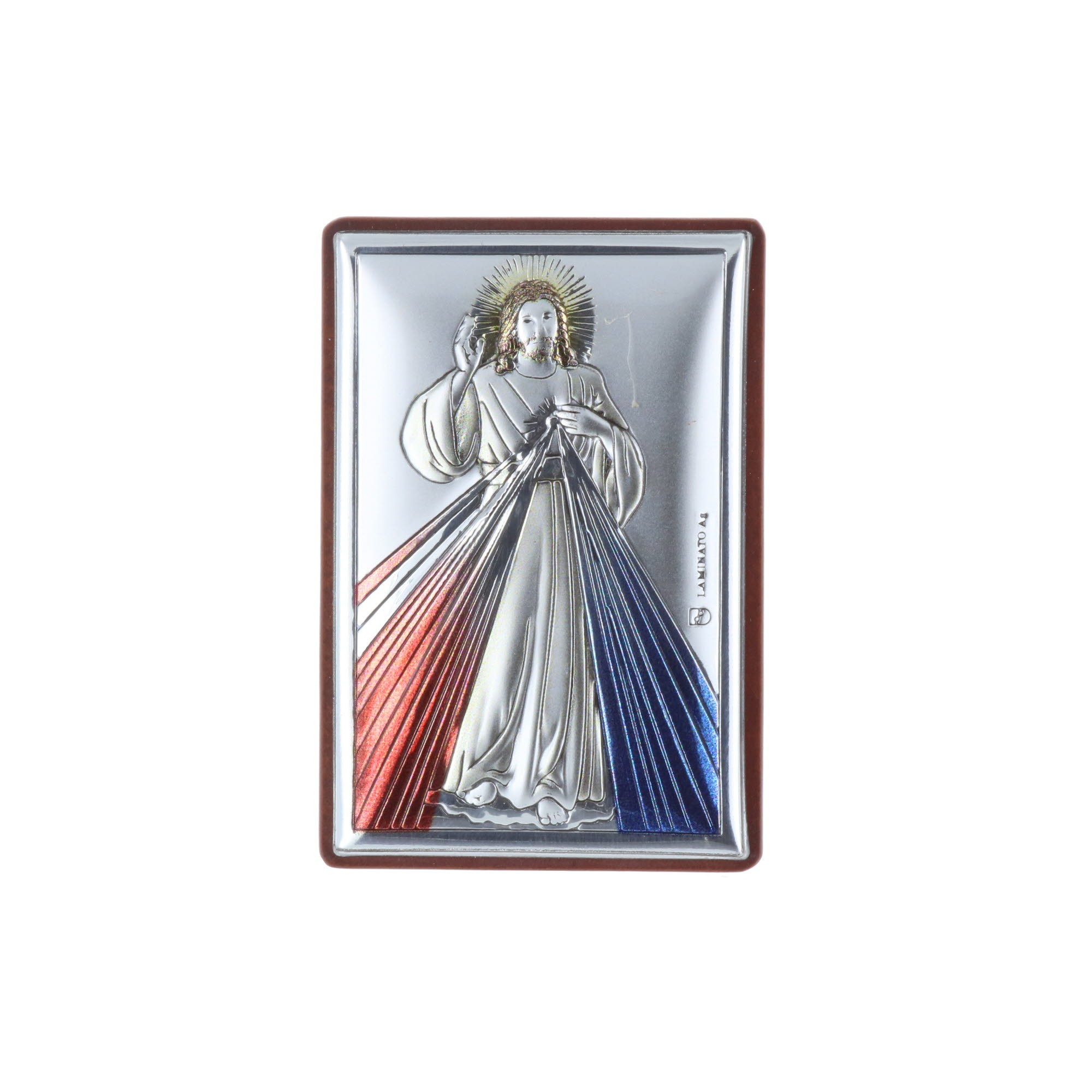Meaning of the image of the Merciful Christ
The word Mercy has two meanings: Firstly, the first means the heart, the second means faithful love. Mercy shows God's deep attachment to man.
In our lives, God has chosen to suffer with us. He accompanies us in our sufferings, our misfortunes and our sins. As Pope Francis says: "Mercy is the ultimate and supreme act by which God comes to meet us. God is then a man who deeply loves Christians.
The image of the Merciful Jesus was created by Sister Faustina after one of her visions at the request of Christ. This image represents Jesus after the Resurrection, giving the grace of the sacraments: forgiveness and help, and today it has become a popular and widespread image throughout the world.
Story of Christ's Appearance to Sister Faustina
The Merciful Christ first appeared to Sister Faustina in her cell on February 22, 1931 in Poland.
She wrote in her diary: "In the evening I found myself in my cell and saw Jesus Christ, dressed in a white robe. He raised his hand to bless and the other hand rested on his heart. From his robe, slightly half-open on his chest, two great rays of light shot out: one white and the other red. Then Jesus said to me: "Paint a picture, represent me as you see Me, with the inscription below: Jesus, I trust in You! "
Saint Faustina: Who was she?
Helena Kowalska (Sister Mary Faustina) was born in 1905 in Poland. She was the third of ten children in a poor farming family. At the age of 15, she started working to help her family. Even then, Helena felt that God was calling her to become a religious. She told her parents that she wanted to enter a convent, but they were against it.
Sister Faustina's first encounter with Christ
In 1924, she experienced her first apparition of Jesus, who ordered her to enter a convent. Without the consent of her parents, she sought permission from several convents to enter. Without success. Only one year later, at the age of 20, she was admitted to the convent of Our Lady of Mercy. She took her vows there in 1926 and took the name Marie-Faustine.
During her 13 years in the convent, Sister Faustina was in charge of the kitchen and the garden. She also kept a "Little Diary" in which she wrote down the requests that Christ gave her.
In 1936, Faustina fell ill with tuberculosis. She was transferred to the hospital where she spent two years praying and writing her diary.
In 1398, just before her death, she drew the Merciful Christ according to a vision she had had.
Canonization of Saint Faustina
In 1968 Deacon Karol Wojtyla, who became Pope John Paul II in Rome in 1978, began the process of investigating Faustina Kowalska's life and virtues. In 1993, he proceeded to her beatification on Easter Sunday.
During the canonization Mass of Sister Faustina, the Pope said "It is important that we fully receive the message that comes from the Word of God on this second Sunday of Easter, which from now on, throughout the Church, will be called Divine Mercy Sunday".
With the canonization of St. Faustina, the Catholic Church decided in 2000 to establish the Feast of Divine Mercy. Since 2001, this feast is celebrated every year one week after Easter Sunday.
Prayer for Merciful Jesus
Lord Jesus, we come to you to thank you for your infinite mercy towards us sinners.
We thank you for the gift of your life to save us, for your constant forgiveness and for your unconditional love.
We ask you to give us the grace to live in your mercy, loving God and loving our neighbours as ourselves.
We ask you to help us to forgive as you have forgiven us, and to give us the strength to live in reconciliation with God and with others.
We thank you for all the blessings you have given us through your mercy and we entrust our lives and souls to you.
Amen







 The Mystery of the Five Wounds of Christ: A Profound Exploration of Their Spiri
The Mystery of the Five Wounds of Christ: A Profound Exploration of Their Spiri  Women's religious orders: A heritage of service and education
Women's religious orders: A heritage of service and education  What is Secours Catholique?
What is Secours Catholique?  Jesus' 40 Days in the Desert: A Spiritual Exploration
Jesus' 40 Days in the Desert: A Spiritual Exploration  In un mondo di connessioni costanti e distrazioni digitali, la Quaresima si sta
In un mondo di connessioni costanti e distrazioni digitali, la Quaresima si sta